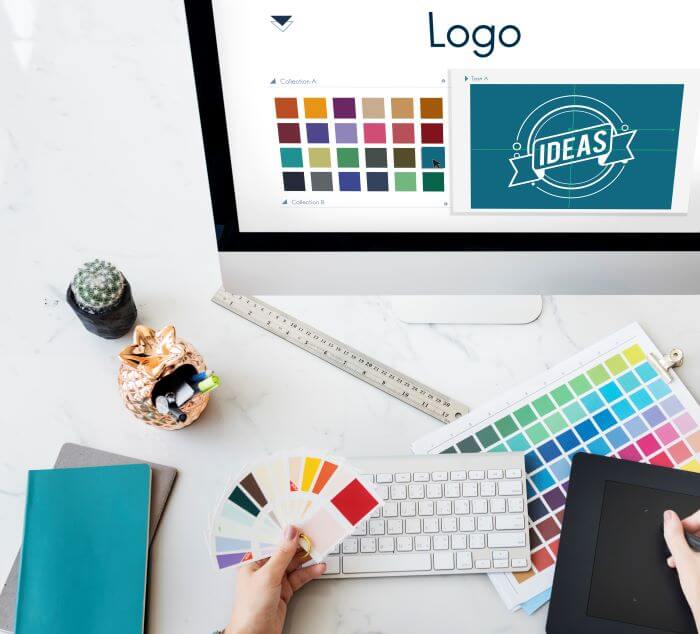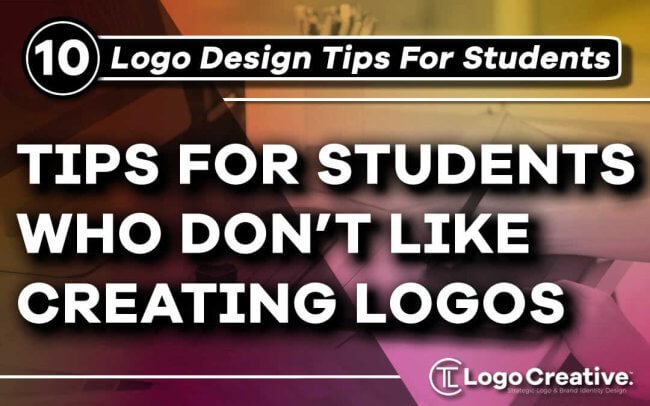In the eyes of the user, the logo design might seem like the simplest of all. People think anybody can do it, and in the least amount of time. However, designing a logo can be the hardest, and the most challenging task of all. In this article we share 10 Tips for Student Designers Who Don’t Like Creating Logos.
Moreover, not every designer is eager to work on logos. Unfortunately, if you are a student, you will most likely be required to do a course or an assignment around logo design. But the good news is, with some tips and tricks, you can ace this subject to finish your design degree with flying colours.
Table of Contents
1. Know the Brand

Logo design is not always as simple as putting together a design using the first letter of the brand name. In fact, there are several popular logos that are much more than a good topography.
For instance, the logos of Starbucks and Adidas symbolize the journey or the motto of the brand itself. Needless to say, this means that you should be well aware of who you are designing for. This requires doing some research about the company and the products they offer.
However, doing market research might not be your forte. If you are not so keen on this, you can seek a write help from academic platforms to gather information about a particular niche. These professionals can do a quick analysis for you, and present you with some quick tips on the target industry.
You can also rely on these educational services to guide you through some theoretical assignments, so that you can find extra time to work on the logo design.
2. How Will The Logo Be Used?
Gone are the days when logos only used to appear on billboards and TV advertisements. These days, almost every business and company has their own merchandise where its logos are prominent. In other words, your design might appear on a variety of materials and in different sizes.
This means that your logo needs to be clean and should look good no matter the location or size. It should look great everywhere, whether it appears as a watermark, on a tag, clothing, business cards, or even as a big printout.
3. Avoid Special Effects
Along the lines of the previous point, many brands are taking a turn against logos that go overboard with special effects. Even Google’s colourful logo design has evolved through the years into simple vectors that work well even in monochrome.
It can be a common tendency to go overboard with special effects and shapes when designing. However, this might not be the best approach. The easiest way to do this would be to design the logo in black and white and make sure that it looks great even without any effects. And then, you can add other features as needed.
4. Choose the Right Font
The font is perhaps the most important aspect of your logo. In fact, it might be how people recognize the brand itself. Needless to say, you might want to stick with simple typography that can be repeated across multiple mediums and materials.
Additionally, you might also be creating a logo that combines imagery or shapes other than typography. In this case, you want to make sure that these do not clash with each other and work harmoniously.
5. Brainstorm on Your Preferred Medium
There is no denying that, eventually, you will have to refine the logo on the software. However, during the initial stages of design, going the old-school way to use a pencil and paper might give you more flexibility.
Of course, this depends on your forte. Some students might feel more comfortable starting on software such as Photoshop, Illustrator or Indesign, whereas others might prefer a sketchbook.
Regardless, do not hesitate to try to use your favourite tools when you start the process. It is not necessary that you should only use one software, as long as the final design is scalable and in the format required by the client.
6. Take a Look at Logos For Inspiration
It is easy to say think out of the box, find new themes and such, especially in the creative field. But let us be honest, unique ideas are not easy to come by, and inspiration does not always come when we want it to.
As long as you don’t copy a design, there is no harm in checking out what the automatic logo makers and design mills are churning out. You might strike a new idea when scrolling through these or get a notion of how different you want your design to be.
7. Do Competitive Analysis
It is common to see what the competitors’ logos are when doing the initial research. However, if you do it too early, it is also possible to get caught up with the existing types of logos out there.
Regardless, it can offer you some valuable insight, such as how it appeals to the target customers or what makes it identifiable. At the very least, you will know what not to do with your design.
8. Avoid Being Too Trendy
Unless you are creating a logo for a pop-up brand that is likely to disappear soon, it would be a bad idea to follow the trends. As it goes, it would be ideal for developing an evergreen logo that will be timeless and appeal to multiple generations.
In the current global market, you will also want to make sure that the design is not offensive to any culture or country. As such, you might want to avoid local elements if the brand intends to cater to international markets.
9. Try Using Negative Space
When designing a logo, it is crucial to consider what you are doing with the negative space. You can leave it vacant or fill it with color. However, how you utilize this can determine how the logo appears to the viewer.
For instance, think of the FedEx logo. The space between the letters E and X forms the shape of an arrow, symbolizing the speedy service provided. In this case, what appears to be simple typography has a unique aspect that differentiates itself from the rest of the designs.
Such clever additions can elevate your logo. Even though it might not be obvious at first sight, it can make the logo more meaningful. After all, here we are years later, still discussing the design of the FedEx logo.
10. Get Feedback
It doesn’t matter if you are designing a logo for a class assignment or doing it for a freelancing project. It will always be good to get the opinion of another before final submission. This means that someone else is looking at your design from a different perspective.
This will help to know if you can do something to improve upon the design or the delivery. If you find that the suggestions are worth paying attention to, it won’t hurt to take a second look at the design.
In the days of logo makers, it can be challenging to come up with something unique for a logo design. However, never forget the fact that your design process is singular to you. A good logo is about being able to communicate a brand’s belief while making it recognizable.
If you think it is too hard to find inspiration for your logo design, why not take a break? You might find the right idea when your mind is elsewhere altogether.
Join The Logo Community
We hope you have enjoyed What Are the Different Types of Business Signage?. If you would like more personal tips, advice, insights, and access to our community threads and other goodies, join me in our community. You can comment directly on posts and have a discussion.
*TIP – We use and recommend DesignCuts for all your fonts, mockups and design bundles.






